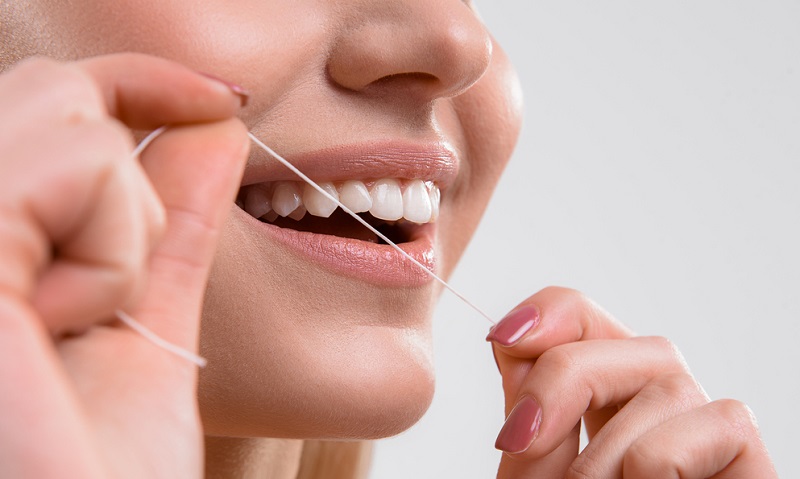Contents

The golden rule of good dental health is to brush and floss regularly.
But let us not deny that knowledge and practice are two very different things. Just because we know these fundamentals by heart does not mean we practice them regularly.
Flossing, in particular, is more difficult to maintain since it necessitates cleaning between the teeth to remove plaque buildup.
On top of brushing at least twice a day, that's a lot of cleaning for a full set of teeth. It comes as no surprise, then, that many individuals put it off until it's too late.
By then, the plaque buildup had progressed to the formation of a cavity and other more serious dental issues. When was the last time you flossed or scheduled professional teeth cleaning?
If you're wondering why you should floss on top of cleaning your teeth, and how often you should do it, it's a good time to go over the basics:
What is Dental Floss?
The reason is to remove food particles and plaque; the sticky layer that is formed on your teeth and can heavily contribute to cavities and gum diseases.
Plaque contains germs that cause cavities and feed on leftover food in your mouth.
These bacteria adore sugary items, and when they consume them, they make acids that can ruin the shiny, protective surface of your teeth, laying the groundwork for dental decay.
Plaque not removed by brushing or flossing can harden and become a tough material.
Tartar accumulates along your gum line, causing gum disease. Only your dentist can remove tartar once it has formed, although daily flossing can help prevent plaque accumulation.
How to Use Dental Floss?
Wrap approximately 18 inches of floss covering the two middle fingers of one hand.
The remaining floss can go around the other fingers of the other hand.
Hold the floss firmly between your thumbs and forefingers.
By doing so it will free up your thumbs and index fingers and help in managing the floss.
Move the floss between the teeth, softly pushing it against one tooth until it reaches the gum line. Slide the floss between the gums and the teeth gently.
The floss should be securely held against the tooth and softly stroked up and down the tooth's surface.
This should be repeated until you get to the back of the last tooth. Rep to this step for the remaining teeth.
When plaque builds up on the floss, a new section should be used.
Does Flossing Create Gaps in Teeth?
This is a long-standing fallacy that has given rise to misleading information.
Unfortunately, this fallacy has deterred many individuals from flossing, which can be incredibly beneficial to your oral health.
When you floss, you remove all of the debris and food particles that have accumulated between your teeth.
Only by reaching between your teeth and removing plaque can you effectively clean your teeth.
This can only be done using dental floss. If you floss properly, you are not creating gaps between your teeth; rather, you are preventing them.
What Happens If You Swallow Dental Floss?
It has been observed that dental floss dissolves in 30 minutes on average. But it depends on the type of floss and the amount of water it is exposed to.
This means that if you floss your teeth and accidentally ingest some floss, it will dissolve in your stomach within around 30 minutes.
If you regularly ingest too much toothfloss, you may have major health concerns.
Because these materials are indigestible, they can induce intestinal obstructions, requiring surgery. Flossing, along with adequate dental hygiene, is essential for preventive care.
How Often Should You Floss Your Teeth?
Flossing removes plaque from between your teeth and along your gum line. If the plaque in these locations is not removed, a sticky deposit forms and eventually hardens.
The resulting substance is known as tartar or calculus, and it can contribute to gum disease.
Flossing at least once per day is recommended to remove plaque, bacteria, and food debris and to help prevent cavities and gum disease.
Ultimately, the optimum time to floss is when your schedule allows for it. So set up a modest amount of time in your daily schedule for this important practice.
Final Thoughts
Flossing after each meal removes dirt lodged between your teeth and completely avoids plaque buildup.
There is no such thing as too much flossing – unless you're doing it wrong and using too much pressure, in which case your teeth and gums will suffer.
When you brush your teeth in the morning or evening, it is most convenient to floss. Is it best to floss before or after brushing?
Flossing before brushing is more successful at removing plaque between teeth and maintaining fluoride concentrations on tooth enamel.



